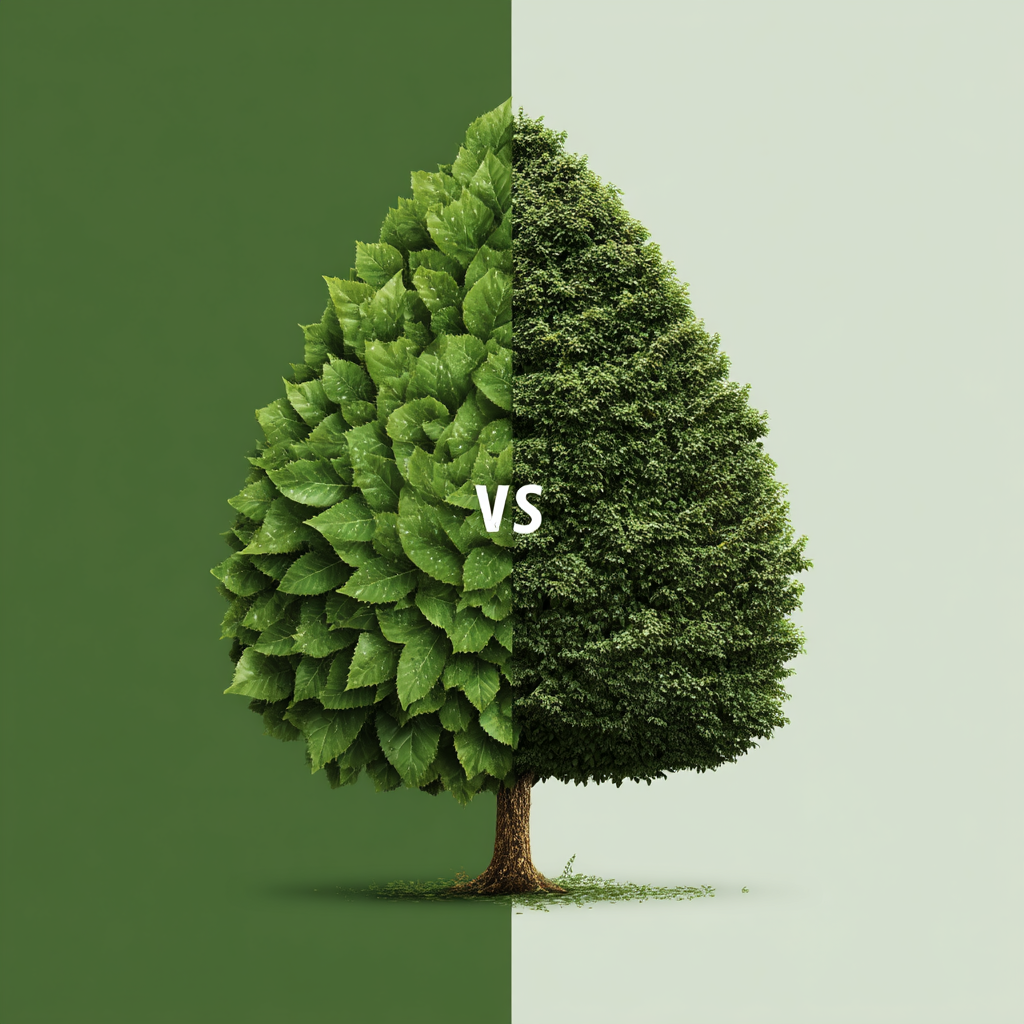Evergreen vs. Trending Content: Striking the Right Balance in Your Content Strategy

A major decision for digital marketers and content creators relates to the type of content they want to invest their resources in: evergreen content or trending content. While each type of content has its distinct characteristics, it is essential to know how each one is equally important. Makes optimizing your content strategy a lot simpler.

In this guide, we will explore a variety of topics including:
- What evergreen content means
- What trending content means
- Differences between the two
- Pros and cons of evergreen content
- Pros and cons of trending content
- How and when to use each effectively
- A hybrid strategy for content success
What Is Evergreen Content?
Evergreen content is also defined as a type of content that remains relevant over time and does not change with the passage of time. Such content does not wane or wither away over time like evergreen trees. This content addresses topics and issues that people search for regardless of whether it is off season or not.
Examples of Evergreen Content
“Step by step guide to baking a chocolate cake”
“Top 10 Tips for Saving Money”
SEO for Beginners
“The Benefits of Eating Water”
“How to Start Blogging in 2025”
Solving a problem or answering a frequently asked question people ask is critical for coming up with such content.
What Is Trending Content?
Unlike other content, trending content focuses on current events, topics generating a lot of discussion, and viral content. It is fast, timely, and usually has a short lifespan. This kind of content is created to target a specific moment and gain popularity quickly.
Examples of Trending Content
“Taylor Swift’s Eras Tour: What You Need to Know”
“Best Memes from the 2025 Met Gala”
“Popular Trends on TikTok Hairdos”
“Explained: Instagram’s New Algorithm Update”
“Recently: AI Announcements by Elon Musk”
Taylor Swift’s Eras Tour and Memes of the Met Gala kept trending, probably due to surge in news and social media buzz.
Key Differences Between Evergreen and Trending Content
Feature Evergreen Content Trending Content
Longevity Stays relevant for years Relevant for days or weeks
Traffic Pattern Steady and accumulative Sudden spikes then drops
Search Intent Informational, how-tos, guides Current news, pop culture
Update Frequency Rely needs updates Needs countless refreshing
Marketing Value Long-term ROI Short-term engagement
SEO Benefit High for organic traffic High for short term visibility.
Pros and Cons of Evergreen Content
Pros
Once published, evergreen content can continue to attract traffic for years with little maintenance.
Constant Clicks
These pieces maintain their relevance, leading to consistent traffic clicks.
Establishing Authority
Evergreen articles enhance your brand’s credibility by showcasing industry expertise.
Time-Saving
Requires less frequent updating, which is more efficient.
Promote Product Sales
Consistent interest makes it ideal for collecting emails or promoting evergreen products.
Cons
Takes Time to Rank
Evergreen content often takes longer to climb search engine rankings.
Not as Viral
Due to lacking novelty, evergreen content goes viral significantly less than other content.
Higher Quality Competition
Evergreen topics are often saturated with high-quality content from established players.
Pros and Cons of Trending Content
Pros
Quick Traffic Boost
Massive traffic surges due to trending topics in a short period.
Social Media Shares
These targeted posts perform exceptionally well on platforms like Twitter, Instagram, or TikTok.
Brand Relevance
Publishing trending content allows your brand to stay aligned with current events.
Increases Backlinks
Trending stories often get cited and referenced which increases the chance of backlinks.
Potential for Virality
The potential for spotlight content can take your business overnight.
Cons
Short Lifespan
Traffic drops off sharply once the trend passes.
Requires Velocity
If you miss the timing window, your material goes out of trend, often making it irrelevant.
Less Long-Lasting
It can be draining to continually create trendy content.
Information Misalignment Risk
In a rush to publish quickly, accuracy and depth might suffer.
Constraints on SEO
These posts may not rank well over time, making them less useful for enduring SEO.
When to Use Evergreen Content
Use evergreen content when you want to:
- Create a perpetual flow of traffic
- Develop authority and trust
- Reinforce active marketing campaigns
- Advance search engine ranking
- Build a resource library
Awesome formats for evergreen content include:
- How-to tutorials and guides
- Product reviews
- Checklists
- Defining glossaries
- FAQs
- Resource roundups
Trending Content Applications
Use trending content when your goal is to:
- Quickly boost brand recognition
- Leverage sociocultural moments
- Encourage social media shares
- Take advantage of viral topics
- Provide commentary on the fresh news
Ideal formats for trending content include:
- Reaction pieces
- Segmented breaking news
- Pop culture trend listicles
- Trending content listicles
A Hybrid Content Strategy, the Best of Both Evergreen and Trending
Most successful businesses combine evergreen and trending content. Check out how you can balance both:
- The 80/20 Rule
A popular rule is to spend 80 percent of efforts on evergreen content and 20 percent on trending subjects. Doing this provides reliable traffic inflows while also ensuring audience interactions are timely and interesting.
- Inject New Trends Into Evergreen Content
One way to use new data is to adjust evergreen content by infusing it with current examples, data, or insights. For example, update a “Haircut Trends” evergreen article every year based on latest styles from celebrities.
- Promote Evergreen Posts Using Trends
Draw from the current trend with content that links back to your evergreen pieces. An example would be a viral blog post on a new workout trend linking to an evergreen guide on healthy eating.
- Build Topical Authority
Using current events allows you to highlight yourself in a niche, and accompanied with evergreen content demonstrates expertise and depth.
- Seasonal Evergreen Content Planning
Some evergreen content pieces still have a seasonal theme like “Best Winter Skincare Tips” that remains relevant every winter.
Case Studies: Evergreen vs. Trending Content in Action
Example 1: Fitness Blog
Evergreen Post: “10 Best Exercises for Beginners” — consistent traffic all year
Trending Post: “2025 Summer Body Challenge Going Viral on TikTok” — traffic spike in June–July
Example 2: Beauty Website
Evergreen Post: “How to Choose the Right Foundation for Your Skin Tone”
Trending Post: “The Clean Girl Makeup Trend Explained.”
Example 3: Tech Platform
Evergreen Post: “How to Set Up Two-Factor Authentication.”
Trending Post: “What Apple’s WWDC 2025 Announcements Mean for Developers.”
In each case, evergreen content brings consistency. Trending content, on the other hand, boosts attention and buzz.
Final Thoughts
A balance between evergreen and trending content is essential for a strong, holistic content approach. While evergreen content captures search engine results and provides value, trending content allows real-time cultural engagement.
Here’s a brief recap:
Factor: Evergreen: Trending:
Shelf Life: Long-term: Short-term
SEO Value: Long-term, High: Immediate, Low over time
Audience Engagement: Moderate, steady: High, short-lived
Best For: Authority, Building SEO: Social Media, News Cycles
By understanding both your audience and your goals, as well as your capacity, you can develop a strategy that balances the strengths of both evergreen and trending content. Remember, evergreen content is your base; trending content is your spark. Together, they create a stable yet exciting content strategy.